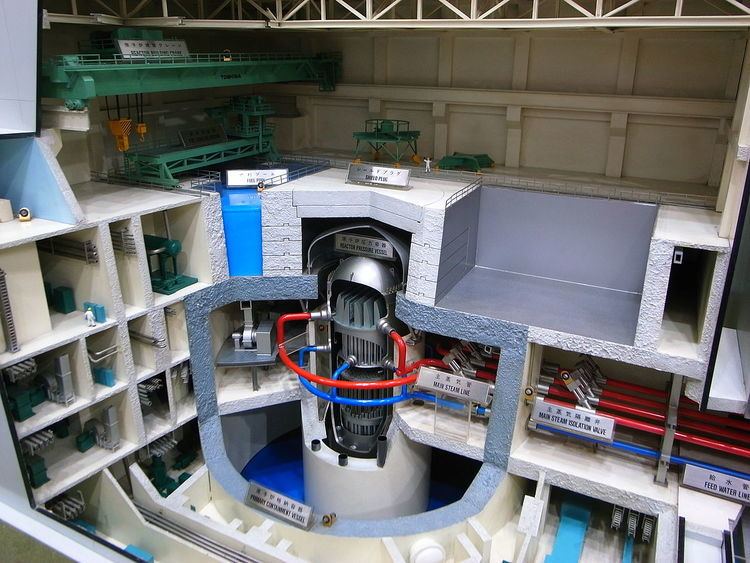 | ||
A generation III reactor is a development of generation II nuclear reactor designs incorporating evolutionary improvements in design developed during the lifetime of the generation II reactor designs. These include improved fuel technology, superior thermal efficiency, passive nuclear safety systems and standardised design for reduced maintenance and capital costs. The first Generation III reactor to begin operation was Kashiwazaki 6 (an ABWR) in 1996.
Contents
Due to the lack of reactor construction in the Western world, very few third generation reactors have been built in developed nations. In general, Generation IV designs are still in development, and might come online in the 2030s.
Overview
Though the distinction is arbitrary, the improvements in reactor technology in third generation reactors are intended to result in a longer operational life (60 years of operation, extendable to 120+ years of operation prior to complete overhaul and reactor pressure vessel replacement) compared with currently used generation II reactors (designed for 40 years of operation, extendable to 80+ years of operation prior to complete overhaul and pressure vessel replacement).
The core damage frequencies for these reactors are designed to be lower than for Generation II reactors – 60 core damage events for the EPR and 3 core damage events for the ESBWR per 100 million reactor-years are significantly lower than the 1,000 core damage events per 100 million reactor-years for BWR/4 generation II reactors.
The third generation EPR reactor was also designed to use uranium more efficiently than older Generation II reactors, using approximately 17% less uranium per unit of electricity generated than these older reactor technologies.
Response and criticism
Proponents of nuclear power and some who have historically been critical have acknowledged that third generation reactors as a whole are safer than older reactors. However, while there are some strong proponents of the American third generation designs that claim they are much safer than existing reactors in the US, other engineers, although not outright saying that they are not safer, are more conservative and have some specific concerns.
Edwin Lyman, a senior staff scientist at the Union of Concerned Scientists, has challenged specific cost-saving design choices made for two generation III reactors, both the AP1000 and ESBWR. Lyman, John Ma (a senior structural engineer at the NRC), and Arnold Gundersen (an anti-nuclear consultant) are concerned about what they perceive as weaknesses in the steel containment vessel and the concrete shield building around the AP1000 in that its containment vessel does not have sufficient safety margins in the event of a direct airplane strike. Other engineers do not agree with these concerns, and claim the containment building is more than sufficient in safety margins and factors of safety.
The Union of Concerned Scientists in 2008 referred to the EPR as the only new reactor design under consideration in the United States that "...appears to have the potential to be significantly safer and more secure against attack than today's reactors."
There have also been issues in fabricating the precision parts necessary to maintain safe operation of these reactors, with cost overruns, broken parts, and extremely fine steel tolerances causing issues with new reactors under construction in France.
Existing and future reactors
The first generation III reactors were built in Japan, in the form of Advanced Boiling Water Reactors. In 2016 a Russian-built generation III VVER-1200 reactor became operational at Novovoronezh Nuclear Power Plant II in Russia. Several others are in construction in Europe, including the EPR at Flamanville. The next third generation reactor predicted to come on line is a Westinghouse AP1000 reactor, the Sanmen Nuclear Power Station in China, which was scheduled to become operational in 2015. Its completion has since been delayed until 2017.
In the USA, reactor designs are certified by the Nuclear Regulatory Commission (NRC). As of October 2014 the commission has approved five designs, and is considering another five designs as well.
Generation III+ reactors
Generation III+ designs offer significant improvements in safety and economics over Generation III advanced reactor designs.
